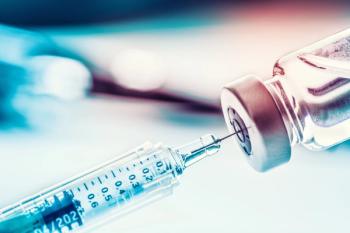
Dueling lipid screening recommendations
Evidence-based recommendations on selective and universal lipid screening in childhood released by the National Heart, Lung, and Blood Institute (NHLBI) in 2011 were endorsed by the American Academy of Pediatrics (AAP) and are integrated in the Bright Futures guidelines on pediatric health maintenance.
Evidence-based recommendations on selective and universal lipid screening in childhood released by the National Heart, Lung, and Blood Institute (NHLBI) in 2011 were endorsed by the American Academy of Pediatrics (AAP) and are integrated in the Bright Futures guidelines on pediatric health maintenance.
Yet, information from various research studies show there is a gap in knowledge about the recommendations among pediatricians and low rates of adherence, said Sarah D de Ferranti, MD, MPH, assistant professor of pediatrics, Harvard Medical School, Boston, Massachusetts.
In a session titled “Conflicting pediatric lipid screening recommendations: what can we learn from dueling guidelines?” held on Sunday, October 25, Dr de Ferranti acknowledged that conflicts between the NHLBI recommendations and those released by the US Preventive Services Task Force (USPSTF) in 2007, which recommended against universal screening, may be creating confusion among practitioners and likely limiting lipid testing. The explanations for low screening rates are probably multifactorial, however, and may also involve perceived inconvenience of testing, barriers to implementing lifestyle recommendations, and ambivalence among providers, patients, and parents, in addition to lack of awareness of the NHLBI recommendations and other issues.
Dr de Ferranti noted that the USPSTF is in the process of reviewing available evidence and updating its recommendations. In her session she reinforced the NHLBI recommendations for lipid screening in children. Those are to test:
· as early as age 2 in children who have family or personal risk factors for dyslipidemia (early cardiovascular disease in parent, grandparent, aunt/uncle, or sibling; parent with total cholesterol >240 mg/dL or known dysplipidemia; presence of diabetes, hypertension, body mass index >95th percentile, cigarette smoking, or any high-risk medical condition); and
· routinely once when children are between the ages of 9 and 11 years and again between ages 17 and 21 years.
“Unarguably there are barriers to screening and more data are needed to support the recommendations for selective and universal screening and understand the burdens,” said Dr de Ferranti. “However, we know that there are significant risks related to lipid disorders during childhood and that there are benefits from treatment when those conditions are identified early.”
Newsletter
Access practical, evidence-based guidance to support better care for our youngest patients. Join our email list for the latest clinical updates.










